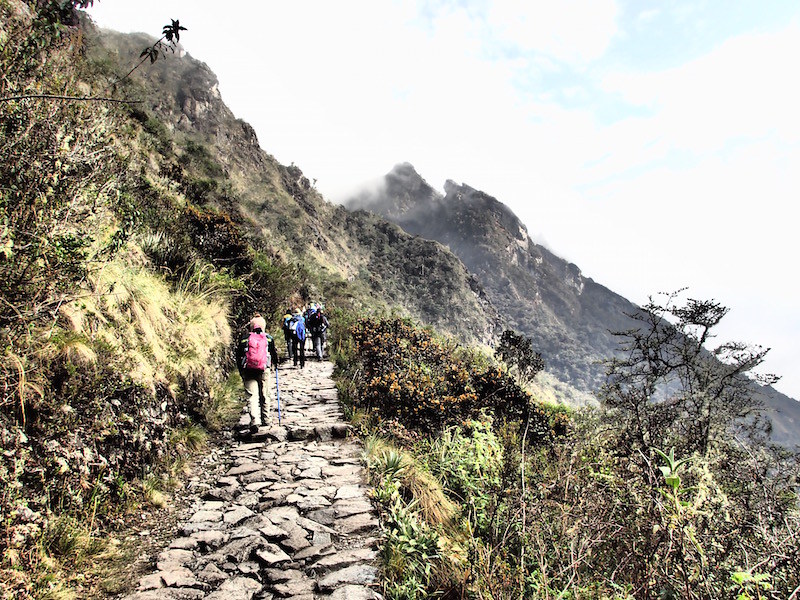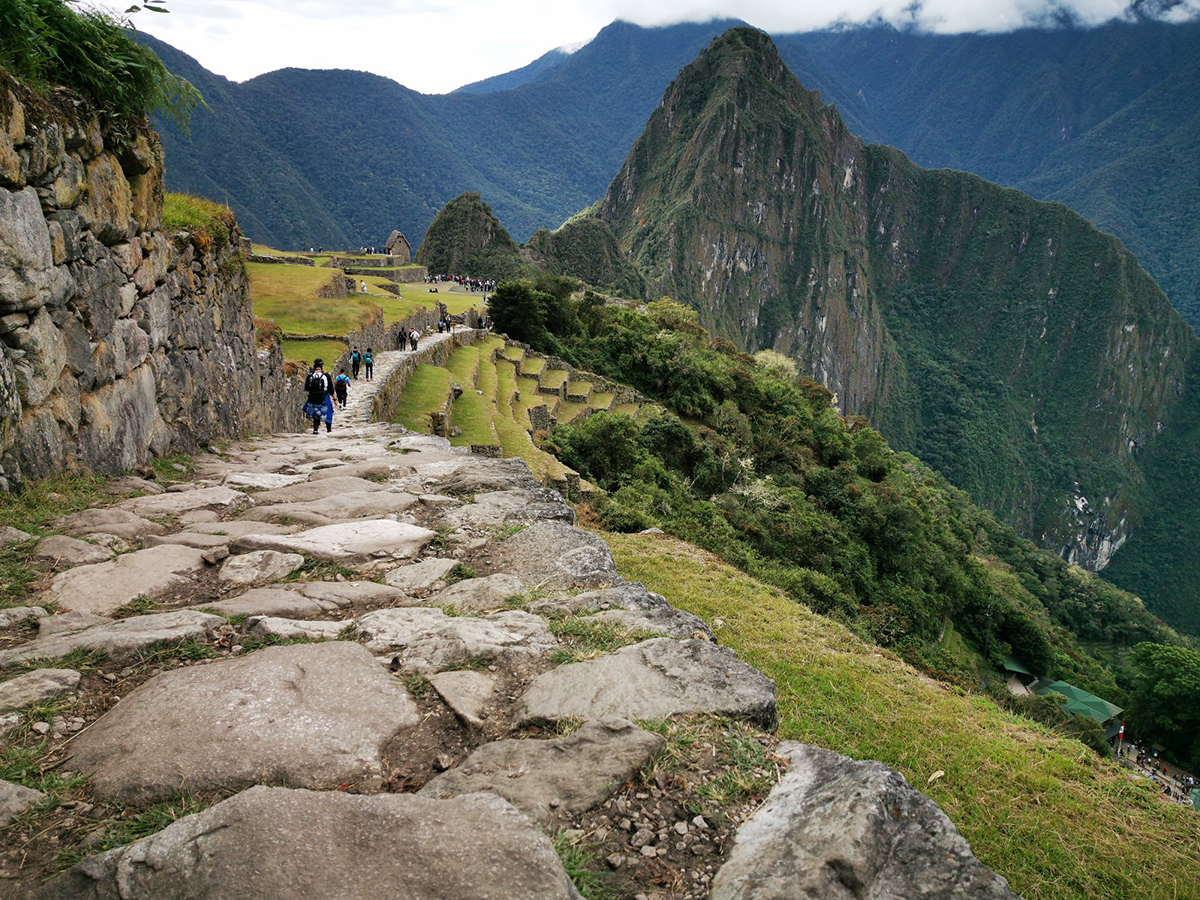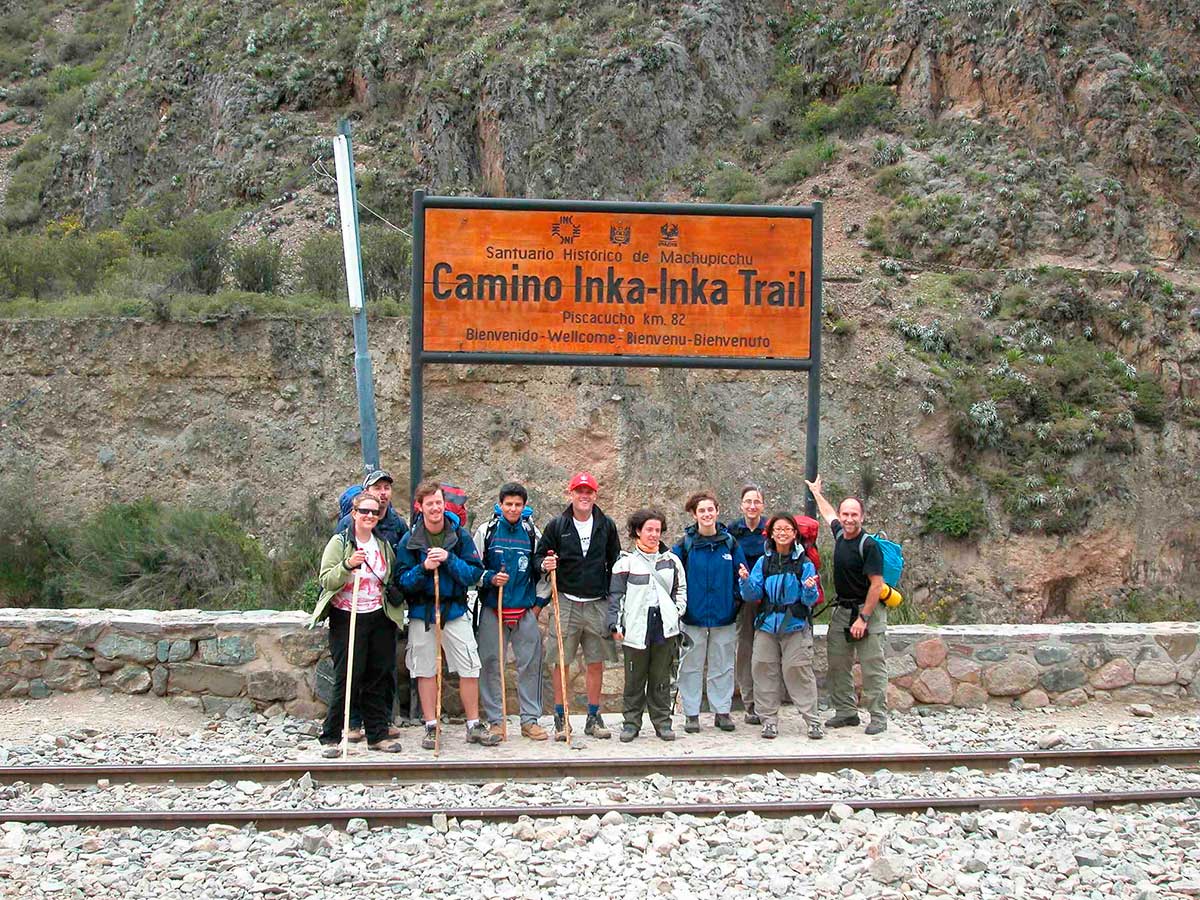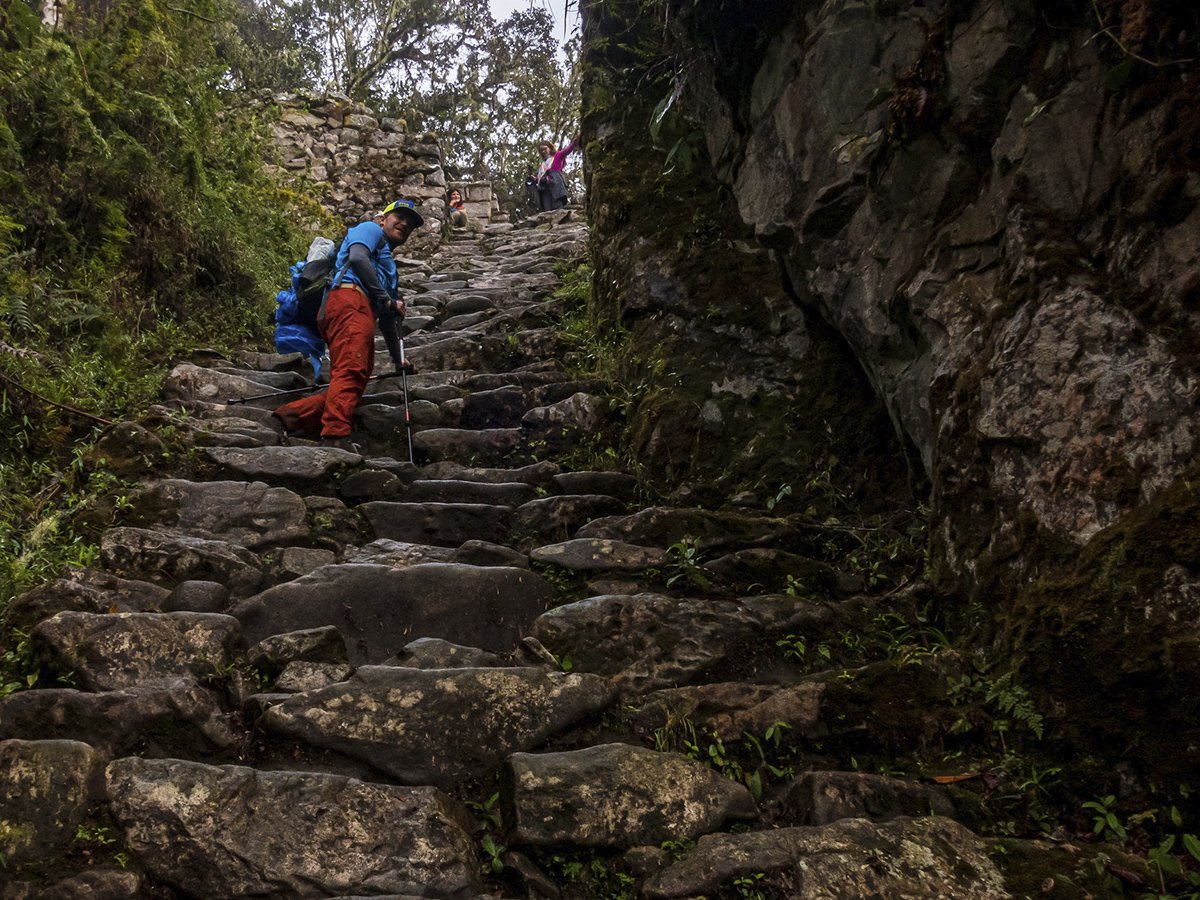
One of the most frequent questions when planning the Inca Trail is the cost of the entry permit. However, it is essential to understand that the permit is not sold individually or directly to the public. By government regulation, this permit can only be purchased by authorized travel agencies as part of a complete tour package.
Therefore, when talking about the Inca Trail permit prices for 2026, we are actually referring to the total cost of the tour that includes said permit, as well as all the necessary services for the trek.
The cost of an Inca Trail tour can vary considerably, this depends on multiple factors, such as the duration of the trek (the Classic 4 day route or the Short 2 day route), the quality of the services offered, the size of the group, and the equipment provided. In this guide, we will break down the components that make up the final price of the Inca Trail.
The goal is to provide a clear understanding of what is included in the cost and help you make an informed decision when booking your trip.
Before analyzing the costs, it is essential to understand how the process of acquiring the permits for the Inca Trail works. These are not tickets that can be bought independently, but are managed through a regulated system.
This is the most important point for planning for 2026. The government releases the sale of all permits for the entire next season (from January to December 2026) in October 2025. The demand for the high season (May to September) is so high that the permits for those dates usually sell out in a matter of hours or days. Therefore, the time to contact an agency and have all the documentation ready is precisely during this month.
Booking date for the Inca Trail 2026
Reservation 2025 | Inca Trail 2026 | Schedule | Available Spaces |
The Inca Trail is one of the most requested hiking routes worldwide. To be able to do this hike, it is mandatory to obtain an official permit and hire the services of an authorized travel agency, as it is not possible to do the route independently.
The permit system for the 2026 season establishes a limit of 500 daily spots for the classic route. This number was implemented to preserve the fragile ecology of the trail and the archaeological sites. It is essential to understand that this quota is distributed among travelers (approximately 200) and the mandatory support staff (approximately 300 guides, cooks, and porters).
The classic route extends for approximately 42 kilometers and is generally completed in 4 days and 3 nights. During the journey, hikers cross diverse Andean landscapes, including the Warmiwañusca pass at an altitude of 4,215 meters. Along the way, several important Inca sites are visited before reaching the final goal: the citadel of Machu Picchu.
New Regulation for the Entrance to Machu Picchu
It is essential to understand the most important update in the regulations: the permit for the Inca Trail and the entrance ticket to the citadel of Machu Picchu are now two different documents and are purchased separately. Previously, the trail permit included access to the citadel through Circuit 1.
Now, travel agencies must manage the purchase of both tickets for each traveler. This logistical change is an important factor in the current cost structure and highlights the need to book a complete package that guarantees both entrances.
There are certain items that are not included in the base price and that you should budget for separately if you need them:
One of the most notable features of the Inca Trail is the diversity of ecosystems it crosses in just four days. The trail is not a static landscape, but a constant transition that allows the traveler to experience the varied nature of the Cusco region.
The journey begins in an inter-Andean mountain ecosystem, characterized by drier valleys and vegetation adapted to the altitude. During the first days, especially when crossing the Warmiwañusca pass, high Andean landscapes can be seen with typical puna vegetation, such as ichu grass. From these high points, you get panoramic views of the surrounding mountain ranges.
Starting from the descent on the second and third day, the trail enters the cloud forest. The change in the environment is drastic, moving into a humid and dense cloud forest. This area is an ideal environment for observing flora, highlighting a great variety of orchids, bromeliads, and ferns. Likewise, it is the habitat of various species of birds, including several kinds of hummingbirds that can be seen along the route.
It is important to clarify a common confusion: the snowy Salkantaymountain is not a visual feature of the Classic Inca Trail. This imposing snowy mountain is the protagonist of its own trekking route, known as the Salkantay Trek, an alternative hike that should not be confused with the traditional Inca Trail.

The final goal and the main reward for completing the Inca Trail is the arrival at the citadel of Machu Picchu. The four-day trek is a journey through history and nature that ends with a visit to the wonder of the world.
The experience of arriving via the Inca Trail is fundamentally different from that of visitors who arrive by train. Hikers enter the citadel through the Inti Punku, known as the Sun Gate. This was the original and ceremonial entry point used by the Incas, offering a first panoramic and elevated view of Machu Picchu.
This exclusive access provides a unique historical perspective. By arriving on the same route as the Inca pilgrims, you get a deeper understanding of the design and importance of the site. Arriving at dawn through this entrance allows you to see the citadel before the crowds from the first trains arrive, adding a component of tranquility to the experience.
| MACHU PICCHU ENTRANCE FEES | Foreign Any Nationality | Andean Community | |||||
| Adult | Student | Child | Adult | Student | Child | ||
Circuit 1 Machu Picchu | Route A: Machu Picchu Mountain | $ 63 | $ 40 | $ 37 | $ 35 | $ 25 | $ 25 |
| Route B: Panoramic | $ 48 | $ 25 | $ 22 | $ 20 | $ 10 | $ 10 | |
| Route C: IntiPunku | $ 48 | $ 25 | $ 22 | $ 20 | $ 10 | $ 10 | |
| Route D: Inca Bridge | $ 48 | $ 25 | $ 22 | $ 20 | $ 10 | $ 10 | |
Circuit 2 Machu Picchu | Route A: Classic | $ 48 | $ 25 | $ 22 | $ 10 | $ 6 | $ 6 |
| Route B: Lower Terrace | $ 48 | $ 25 | $ 22 | $ 20 | $ 10 | $ 10 | |
Circuit 3 Machu Picchu | Route A: Huayna Picchu | $ 63 | $ 40 | $ 37 | $ 35 | $ 25 | $ 25 |
| Route B: Royalty | $ 48 | $ 25 | $ 22 | $ 10 | $ 6 | $ 6 | |
| Route C: Great Cavern | $ 63 | $ 40 | $ 37 | $ 35 | $ 35 | $ 25 | |
| Route D: Huchuy Picchu | $ 48 | $ 25 | $ 22 | $ 20 | $ 10 | $ 10 | |

As detailed, the Inca Trail is a route in high demand worldwide and subject to strict regulations. Successful planning is based on understanding and acting on the following key points.
First, the reservation must be made well in advance. It is recommended to secure the permits a minimum of 6 to 8 months in advance for the high season (from May to September) and at least 4 to 6 months for the rest of the year. This planning ahead is necessary due to the limited number of available permits.
Second, access to the Inca Trail is managed exclusively by authorized travel agencies and their specialized staff. It is mandatory to do the hike as part of an organized tour that includes tour guides, cooks, and porters. This system ensures the traveler's safety and the preservation of the trail.
Finally, informed planning is the best way to ensure a successful experience. By understanding how the permits work and acting well in advance, you avoid the problem of finding the spots sold out for your desired dates.
There are regulations imposed by the Peruvian state that limit the traffic of the Inca Trail to 500 people per day, including guides, cooks and porters who must carry all the camping equipment. The regulations do not allow pack animals on the Inca Trail due to the conservation of the old stone path.
The percentage of support personnel for hikers is almost 75% of those who enter per day and due to high tourist demand on the Inca Trail, the spaces assigned for hikers are quickly exhausted. For this reason, if you want to walk this incredible trail, you must book at least 6 or 7 months in advance and through a travel and tourism agency authorized to operate on the Inca Trail, such as Machupicchu Andes Tours.
 |  |
Booking the Inca Trail with Machupicchu Andes Tours is very easy. Because it is available 24 hours a day, 7 days a week and you must provide us with the following information:
1.- First choose three different dates: the first date must be the main one and two optional backup dates in case we cannot reserve your first option because it may be sold out. This does not happen often, because the Machupicchu Andes Tours team works to obtain the first alternative.
2.- Send us all the information required for each hiker in your group:
3.- Deposit 50% of the cost of the tour for each hiker, so we will be ready to reserve your Inca Trail permit for the date you chose. We have several payment methods: VISA, MASTER, AMERICAN EXPRESS and PAYPAL. After receiving your deposit, we will send you a confirmation email.
4.- Once we have all your required data and the deposit, we will place your order on our reservation waiting list for the requested dates.
We can change errors of a typographical nature or if there is a new passport number. The regulations imposed by the Peruvian government do not allow name changes and transfer of entry permits. It is totally personal, that is why it is very important that you bring your personal document with which you made your reservation for the Inca Trail to be able to show at the control points.
Also the Peruvian government does not allow changes of dates, cancellations and refunds. Once we obtain the permit in your name and on the requested dates, it is totally personal, it is 100% non-refundable and non-transferable. If you wish to change the date, you must purchase a new entry permit if it is available.
The official opening sale of the permits to the Inca Trail 2026 takes place in the month of October. Therefore, we must be ready to obtain your permission and once we have your permission we will send you an email with the confirmation. Then, you can start making reservations for flights, hotels, etc.
 |  |